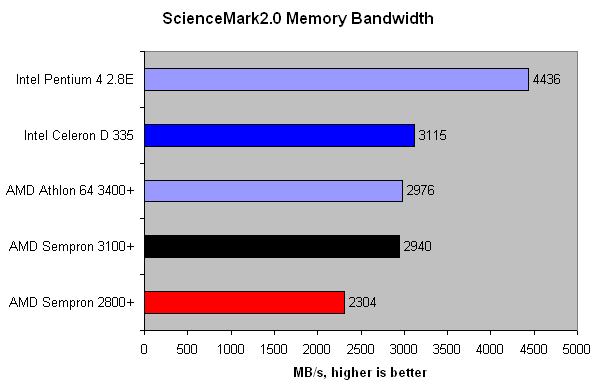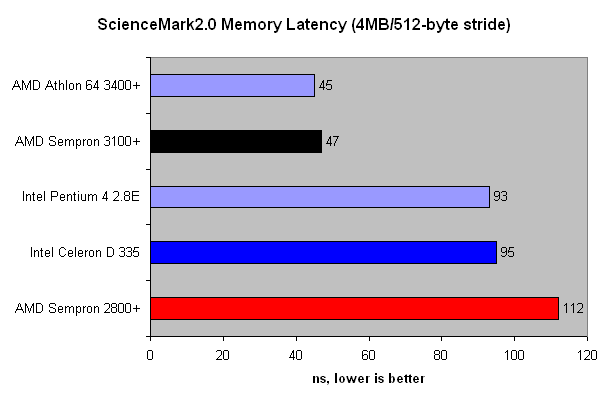ScienceMark 2.0 and Pifast
Starting off with a look at memory bandwidth and latency. I've coloured the Sempron 2800+'s results in red, the Sempron 3100+'s in black and Intel Celeron D 335's in dark blue.
A few thing to note here. AMD's Sempron 2800+ Socket A processor's usable memory bandwidth is limited to around 2.7GB/s even though a dual-channel nForce2-based motherboard was used. That's the inherent problem of using a double-pumped 166MHz FSB. S754 CPUs use an integrated memory controller that allows for single-channel DDR400 memory usage. In that respect, ~2.9GB/s bandwidth is pretty good. Intel's quad-pumped Celeron D, when paired up with a dual-channel Springdale motherboard, returns a reasonable bandwidth figure, although it can't compete with an 800MHz FSB full-blown Prescott, naturally.

Off-cache memory latency is an interesting story. The S754 Sempron 3100+ cruises along at 1.8GHz, 200MHz slower than its Socket A counterpart. Part of its higher model numbering is derived from the performance benefits associated with an on-chip memory controller. Taking out the tractional northbridge from the equation significantly reduces the delay in data being delivered from system RAM to the processor. In fact, according to ScienceMark2.0 analysis, the delay is half that of Intel's S478 CPUs. Socket A brings up the rear in this chart, too.

Pifast takes both memory bandwidth and latency into account. The 1.8GHz Sempron 3100+ is a clear 8 seconds quicker than its 2GHz Socket A Sempron 2800+ family member. Pifast doesn't really benefit from greater levels of on-chip cache, and that's why a full Prescott is only marginally quicker than its Celeron counterpart. Out of the budget contenders here the Sempron 3100+ is a clear winner.









